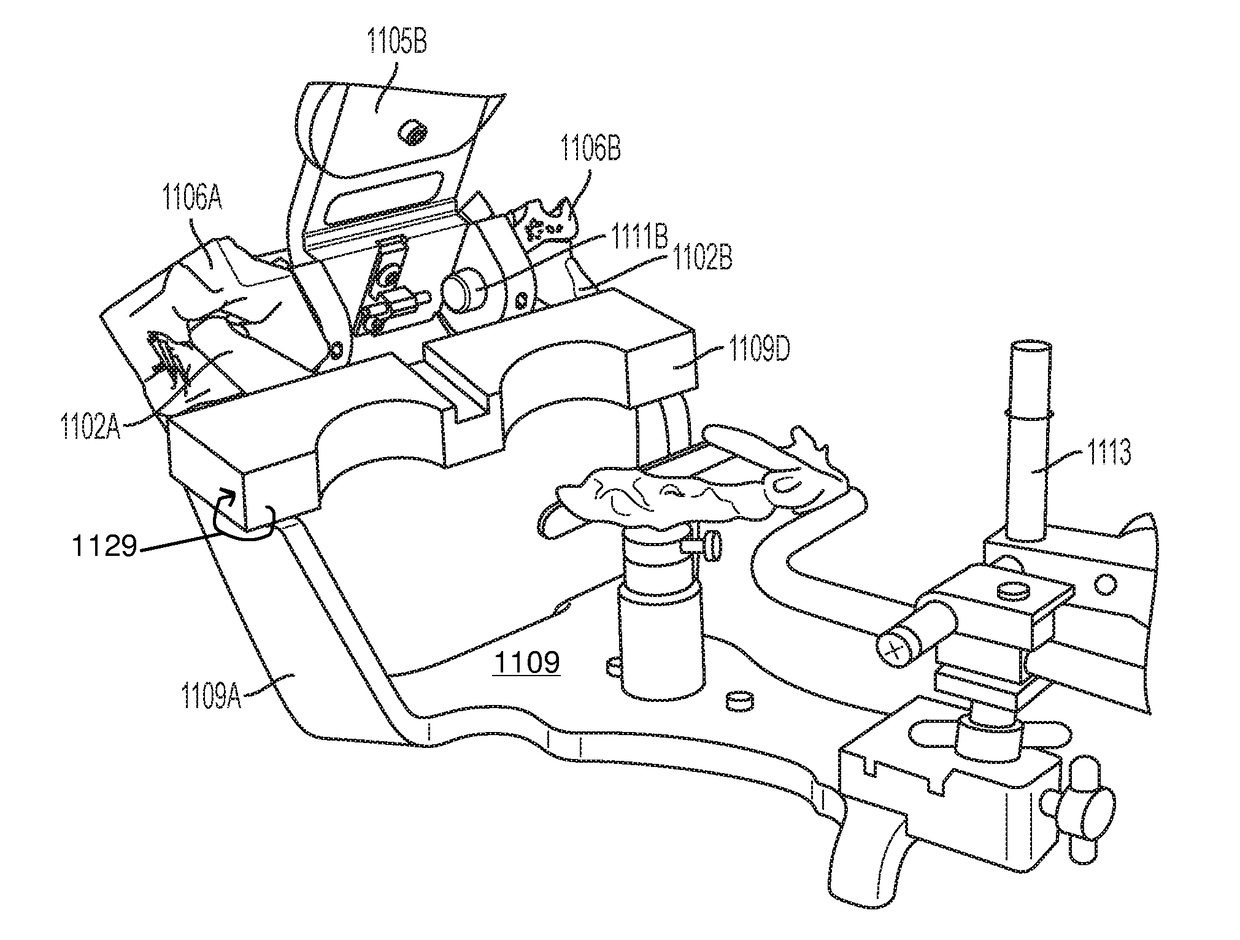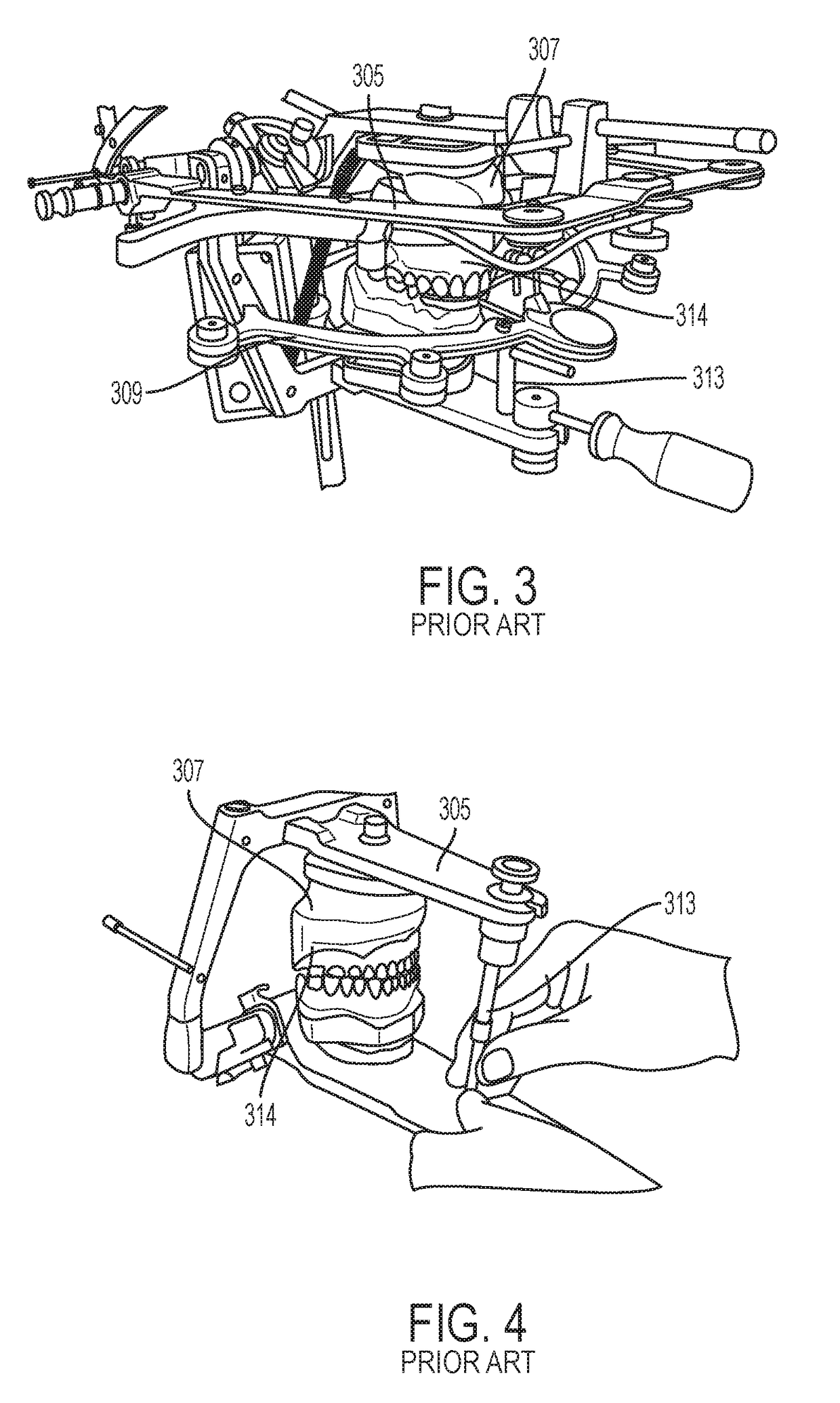Anatomical articulator for dental diagonostic method and prosthetic reconstruction
a technology for temporomandibular joints and anatomical articulators, which is applied in the field of apparatus for modeling the temporomandibular joints, can solve the problems of traditionally difficult modeling of the bone structure of the jaw, and achieve the effects of less cumbersome measurements and dials, accurate depiction of patients, and more anatomically accura
- Summary
- Abstract
- Description
- Claims
- Application Information
AI Technical Summary
Benefits of technology
Problems solved by technology
Method used
Image
Examples
Embodiment Construction
[0036]In one embodiment, an articulator, according to the disclosure herein, includes common portions of standard articulators with significant changes in the replicated temporomandibular joint (TMJ). Instead of the above noted prior art replicas with generic and ineffective condyle termini in the form of simple spheres (202) and right angled or at least sharply angled fossae (606), one embodiment of an articular (900) includes a lower base (909) on which a lower jaw (not shown) would be mounted on the above-noted elevated platform. Instead of the mechanical replicas described above, however, the articulator of FIG. 9 includes an exact replica of a patient's condyles (902) and fossae (906) that have been printed via stereolithographic three-dimensional printing techniques. Accordingly references to anatomically modeled or printed condyles and fossae may be considered “replica condyles” and “replica fossae.” Other additive layer three-dimensional printing options are also available t...
PUM
 Login to View More
Login to View More Abstract
Description
Claims
Application Information
 Login to View More
Login to View More - R&D
- Intellectual Property
- Life Sciences
- Materials
- Tech Scout
- Unparalleled Data Quality
- Higher Quality Content
- 60% Fewer Hallucinations
Browse by: Latest US Patents, China's latest patents, Technical Efficacy Thesaurus, Application Domain, Technology Topic, Popular Technical Reports.
© 2025 PatSnap. All rights reserved.Legal|Privacy policy|Modern Slavery Act Transparency Statement|Sitemap|About US| Contact US: help@patsnap.com



